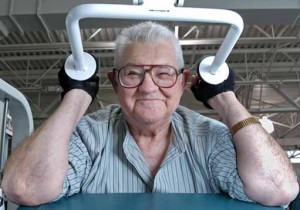But don’t just take our word for it.
How Yoga Helps Build Healthy Bones:
Like jogging, walking weight lifting, yoga is a type of weight bearing exercise. Simple yoga poses use the weight of the body up against gravity. The form of resistance training puts a mild stress on bones that encourages new bone growth.
But unlike other forms of weight bearing exercise, yoga doesn’t stress cartilage or damage joints. Yoga postures lengthen muscles and hold them in place. This creates tension on bones and helps to realign muscles, ligaments and tendons.
"Yoga helps grow bone mass, but because yoga poses pull and stretch the bones from every conceivable angle, yoga also may stimulate the formation of a bone structure that is able to resist greater amounts of pressure, as well as many different types of challenges," writes Loren Fishman, MD, co-author of Yoga for Osteoporosis.
“That pull of muscle on bone is the single major factor in bone strength,” writes Sara Meeks, a physical therapist who specializes in osteoporosis and a yoga teacher. “By putting tremendous pressure on the bones without harming the joints, yoga may be the answer to osteoporosis.” (see the May 2011 edition of Yoga Journal to read the full text of “Good to the Bone”).
In a 2009 article published in Topics in Geriatric Rehabilitation, a study of people with osteoporosis with an average age of 68, showed that people who practiced yoga for as little as 10 minutes a day gained bone in their spine and hips.
Like any form of exercise, yoga needs to be practiced wisely and certain yoga postures should be done with caution for people with osteoporosis.
Dr. Fishman cautions people with osteoporosis that simply practicing yoga, without proper attention to alignment, may do more harm than good
If you’re new to yoga, go to a beginner class. You can always talk to the teacher before class if you are unsure if the class is right for you. Or you can ask to observe the class.
Here are some yoga posture suggestions for building bones:
*Standing postures such as Warrior I and II
*Tree pose (standing on one leg posture...use the wall or a chair for balance!)
*Bridge pose
*Gentle twists on your back (avoid seated or standing twists)
*Seated forward bends (use pillows, blankets or other props under knees and gently round the back-- NEVER force forward bends!).
For more information about how people with osteoporosis and arthritis can safely practice yoga, visit Dr. Loren Fishman visit sciatica.org.
To read more about Dr. Fishman's study about yoga and bone health read:
http://www.huffingtonpost.com/loren-fishman-md/pilot-study-and-new-book_b_384430.html
